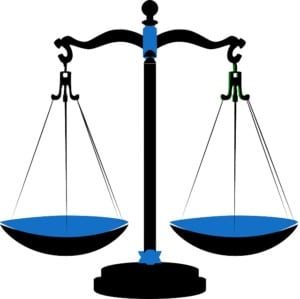Introduction
Tulasana is an advanced variation of the Lotus Posture. It belongs to the Arm balancing category. Some people call this pose Toalasana.
Let us look into the meaning, steps, and benefits of Tulasana.
Tulasana Information
| Pose Name | Tulasana |
| Sanskrit | तुलासन |
| IAST | Tulāsana |
| English Name | Scale Pose Balance Pose |
| Other Names | Utthita Padmasana (Lifted Lotus Pose or Raised Lotus Pose) Dolasana (Swing Pose) |
| Pronunciation | toe-LAHS-anna |
| Level | Advanced |
| Type | Arm Balance |
Tulasana Meaning
The Sanskrit word Tulasana is the combination of two words Tula and Asana. Tula means Scale. We know that Asana is Pose. So Tulasana means Scale Pose or Balance Pose.
On performance, this posture looks like a balance. For this reason, this posture gets this name.
Utthita Padmasana
Scale Pose is also known as Utthita Padmasana. Utthita means raised or lifted. Hence it gets the name in English Raised Lotus Pose or Lifted Lotus Pose.
Dolasana
Scale Pose is sometimes called Dolasana which means Swing Pose. But Swing Pose is a more advanced variation of Scale Pose. In Scale Pose, no movement is required; whereas in a Swing Pose, the suspended body lifted by arms should move back and forth like a swing in action. Only advanced students should attempt this movement. It may harm your shoulders or arm joints, if not done correctly.
Bihar School of Yoga offers a different version of Dolasana which is different from Lifted Lotus Pose.
Tulasana Procedure
The Procedure for Scale Pose includes safety and precautionary measures, preparatory postures, step-by-step execution, follow-up postures, tips, and advanced posture considerations. Let us see them one by one.
Precautions and Contraindications
The whole body rests on the arms only. If not done properly, there are chances that arm joints or shoulder joints get injured. One must take care and follow the steps in a slower phase at the beginning.
Those who have health conditions like frozen shoulder, rotator cuff injury or ailments, shoulder bursitis, Osteoarthritis, dislocated shoulder, fractured collarbone, or pain in the arm and shoulder region, should avoid Scale Pose.
Also, people who suffer from acute osteoporosis should avoid this posture.
Preparatory Poses
One should not attempt Scale Pose directly. He should have some hands-on experience in doing the following yoga poses.
- Sukhasana (Easy Pose)
- Ardha Padmasana (Half Lotus Pose)
- Padmasana (Lotus Pose)
- Baddha Konasana (Bound Angle Pose)
Tulasana Steps
Step 1
Sit in Lotus Posture placing your feet on the thighs of opposite legs.
Step 2
Place your palms on the floor facing downward outside your thighs. Have a couple of normal breaths.
Step 3
Take a deep breath and raise the body and the hands should be in a vertical position. The weight of your whole body should be distributed to your two hands equally. Your trunk, neck, and head should be in a straight line. Close your eyes or fix your eyesight on any object before you. Keep the position to the desired duration.
Step 4
To release the posture, place the body down while exhaling and release the Lotus Posture.
Duration
Initially, one should retain this posture for one or two minutes. Gradually, he may extend this up to five minutes. The point is that one should not feel any discomfort or strain during the performance. In cases of pain or discomfort, one should release the pose at once.
Follow Up Poses
Contrary to the common understanding, Kukkudasana is not the follow-up pose. One should resort to any one of the follow-up poses listed below.
- Bhujangasana (Cobra Pose)
- Makarasana (Crocodile Pose)
- Savasana (Corpse Pose)
Advance Pose Considerations
After mastering Tulasana, one may consider the following more advanced poses.
- Kukkudasana (Cockrel Posture)
- Baddha Padamasana (Bound Lotus Pose)
- Dolasana with swing movements.
- Garbha Pindasana (Womb Embryo Pose)
Tulasana Benefits
- It improves the agility of the arms.
- This Pose prevents pain in the shoulders, arms, and back.
- It opens the chest.
- Arms, wrists, and shoulders are stretched.
- The control and the coordination of hands are improved.


